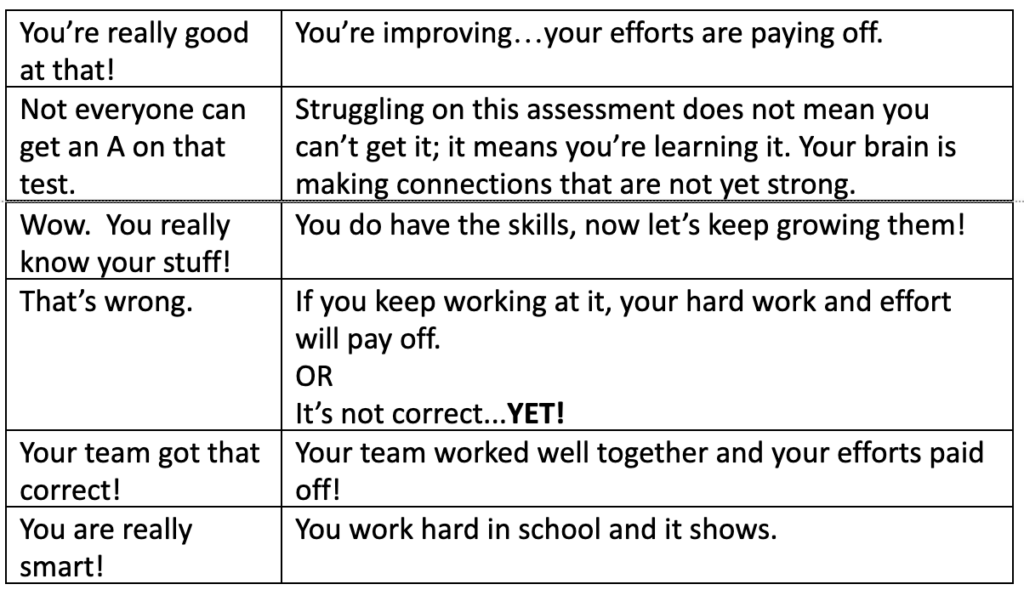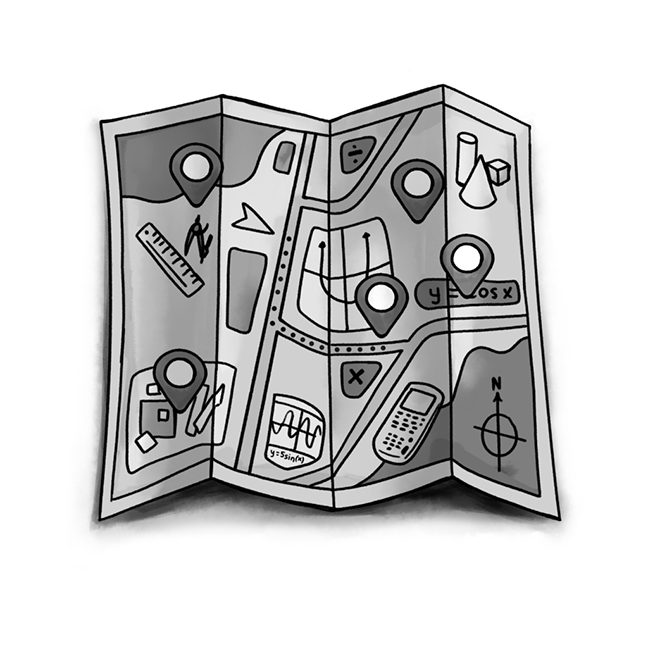Pam Lindemer, Ionia, MI pamlindemer@cpm.org
Jennifer McCalla, Parma, OH jenleeford@aol.com
Christy McConnell, Whitefish, MT christymcconnell@cpm.org
Disclaimer:
CPM is glad to share the findings from the Teaching Redesign Corps investigations, but these are just ideas. It is expected that teachers will rely on their knowledge of their students, the mathematics they are teaching, and the circumstances surrounding their specific teaching assignment when modifying their own behavior and selecting appropriate instructional strategies. A given strategy may have a positive effect on student learning in some situations and a negative effect in others. Please use your own best judgement as you continue to improve your teaching practice.
All too often, students perceive the goal of mathematics instruction as answer-getting – racing through an assignment by giving each problem a superficial read, recording an answer, and not giving a second thought to accuracy or deeper understanding. Our study sought to change this behavior by developing a culture of investigation where students would thoughtfully engage in problem-solving, use feedback to make sense of the situation, seek to clarify their understanding, try a different approach, and extend their thinking beyond simple answer-getting. In order to create such a climate of learning, we realized we needed to educate our students about growth mindset to set the groundwork for the entire year. Our initial phase focused on classroom norms, embracing mistakes to analyze where a student’s current thinking was and how to move that forward, and how to positively critique each other’s thinking in order to foster learning rather than answer-getting.
Norms and Mindset
To create classroom norms, we combined videos and lessons from Jo Boaler’s A Week in Math with a number pattern activity. We selected a number pattern problem that appeared to be easy to figure out at first, but no team got it correct. As we circulated and talked with our teams, we focused on using positive, growth mindset language. We said, “Your team doesn’t have it correct yet, but if you continue to work hard, like you are, I am sure you will eventually get the answer. Keep working.” The number pattern was difficult for everyone and required all teams to engage in productive struggle, even those who were not used to being challenged. This placed every student on a level playing field. After several failed attempts at solving the pattern, a small number of students figured it out and shared their solution with their teams and the class. We then discussed how failing made them feel and made connections with the content from the video. Next, each team of four was asked to discuss and write down things that they liked when working in teams and things that they did not like when working in teams, based on their experiences the day before and in previous classes. As a class, we created one large t-chart of what they liked and did not like when working in teams; each team voted on their top three to five choices. The top three choices from one of our classes were: (1) Our brain grows when we make mistakes; (2) Everyone’s ideas are valued; and (3) Everyone can be good at math if you work at it. These became our classroom norms.
In classes where growth mindset was a focus at the start of the year, students seemed to be more willing to take risks and try new things. We think that it is critical to set classroom norms at the start of the year to foster this culture of investigation. We found it difficult, if not impossible, to change the culture without first addressing many of the negative feelings associated with mathematics instruction that students harbor. Without this foundation, students will not embrace investigation or the mistakes that come with it. While establishing norms, we learned the following:
- The time spent focusing on growth mindset during the year was well worth it and had positive outcomes for most students.
- Positive outcomes may not necessarily be in the forms of grades, but can be reflected in observable student behaviors. We noted improvements in perseverance, the acceptance of mistakes as opportunities for growth, the development of a sense of resiliency, more risk-taking, and an increase in the willingness to accept challenges.
- Some form of parental education in regard to mistakes and how they provide opportunities for learning and growth is an important piece of the picture.
- Focusing on what you do know and what you need to work on (mistakes) is a 180-degree shift from what most kids and parents have experienced in school.
- The process of developing culture is never over; we know that there are outside influences (other teachers, coaches, parents, students) that affect student mindset.
- It is important for our students to see that when teachers make mistakes, we own them and learn from them; modeling gives students a sense that mistakes are a real part of life.
- Many who have not been successful in math are encouraged by the idea that challenging math problems help your brain grow, rather than just make them feel stupid.
- Teacher talk has a huge influence on how students perceive the class and the content; how a teacher responds to their work has an impact on how they perceive themselves and school. Using growth mindset language needs to be a focus for teachers throughout the year.
- We used a Growth Mindset Pocket Feedback Tool (gdoc) (below); “Instead of Saying This… Say This” The tool was similar to having pocket questions. We found it helpful because changing our behavior, such as learning not to praise intelligence, required some effort on our part.
“Instead of Saying That….Say This” Pocket Feedback

Our group used four innovations to support the development of “A Culture of Investigation.” The first innovation, “My Favorite No”, focused on mistakes anonymously providing opportunities for analyzing, discussing, clarifying the problem followed by the opportunity to re-do the problem. A second innovation, The Teamwork Rubric, focused on self and team reflection of group dynamics from communication to on-task behaviors. When teams have a good rapport and work effectively together, it increases math learning. Number Talks, the third innovation, empowered students to question and share their thinking and the strategy they used to solve problems. It is definitely a confidence builder and provides the groundwork for deeper understanding. The last innovation was goal setting. It presented the framework for students to experience perseverance, make mistakes, learn resiliency, and celebrate successes. All four innovations enhanced our student’s math experiences and growth mindset. Stay tuned for the March newsletter where the four innovations are revealed in detail!
